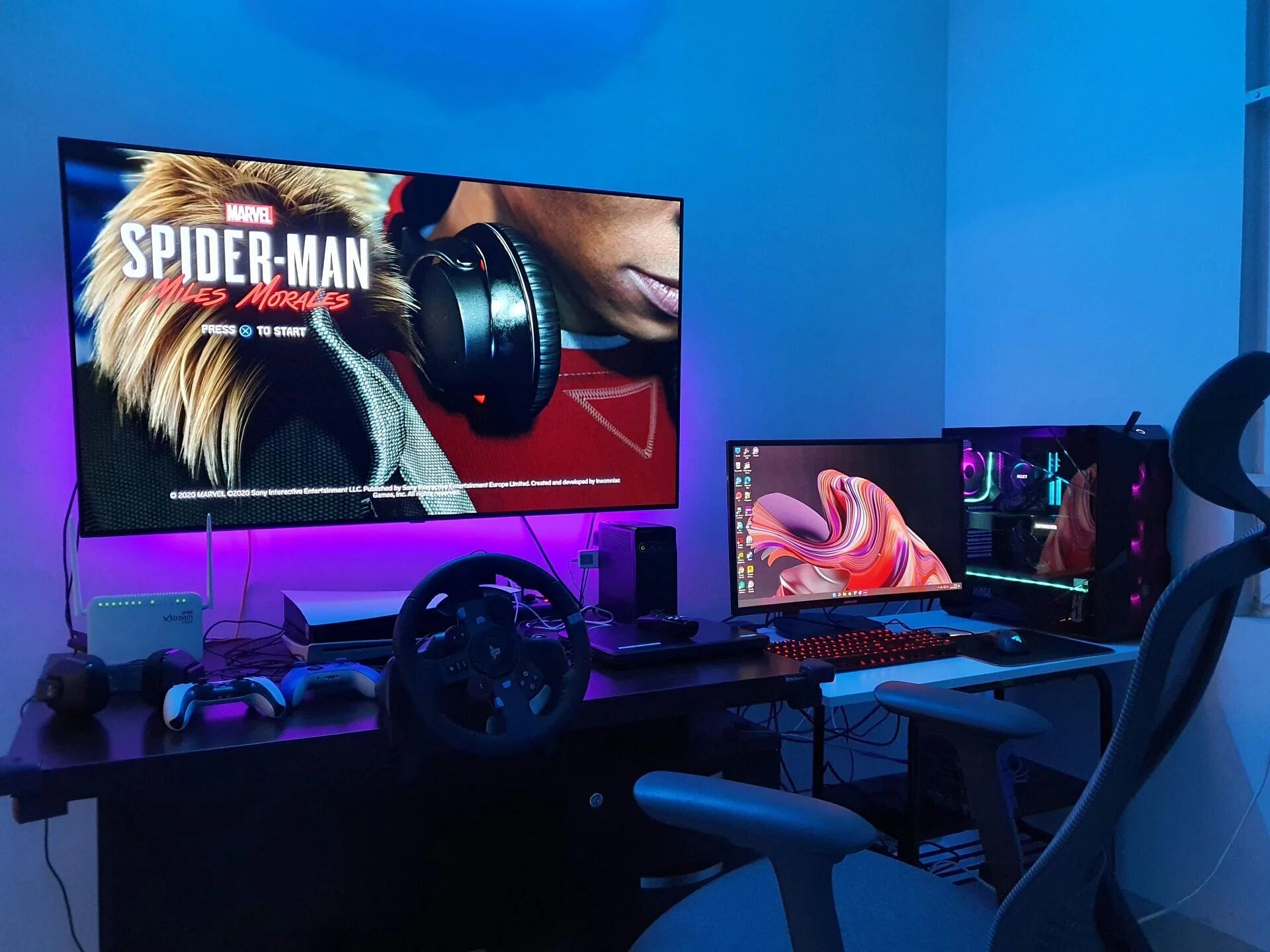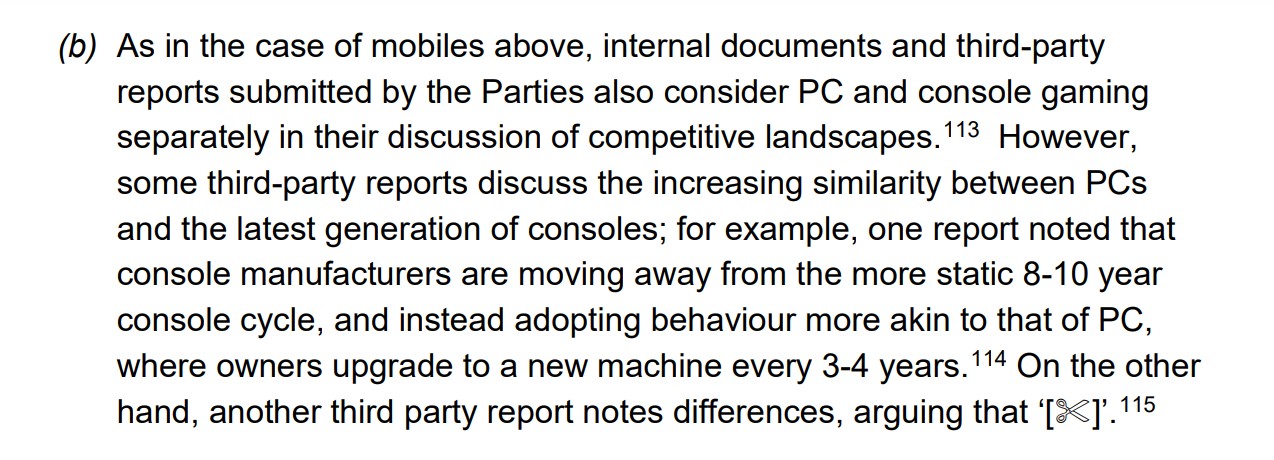
Story Highlights
- A third-party report in the verified CMA documents says that console makers will move to PC-esque 3-4 year upgrade cycles.
- The console and PC markets are different as per this report, but ditching the 8-10 year cycle will bridge this.
- In addition, we also learn that the Steam Deck is considered a portable PC, not a console.
CMA documents have revealed that many third-party reports suggest consoles are moving to upgrade cycles resembling PCs.
One third-party report submitted to the regulator specifically says that console manufacturers are moving away from static 8-10 year cycles. Instead, they are embracing the way of PC builders and looking to upgrade machines every 3-4 years.
Even though the CMA itself considers the PC and console markets as different entities as per other third-party reports.
The difference between the two has been reduced in this console generation of PlayStation and Xbox. Hence, major console makers are not looking forward to retaining the 8-10 year console cycle, which is groundbreaking.

If there is one good thing that has come out of the CMA’s opposition to the Microsoft-Activision deal, it’s the data. We have got insights we would have never had about giants like Sony, Microsoft, Nintendo, and much more. From hints about Nintendo Switch 2 to how 69% of players choose PlayStation for exclusives, we have learned a lot.
And, these well-structured reports from the regulator keep on giving us even more info. We have heard a lot of rumors recently about how the PlayStation 6 will release in 2026. Considering how this means the console won’t even last for 6 years as the latest product, many didn’t believe that.
However, a report regarding The Last of Us Part III again reiterated this targeted release date for PlayStation 5‘s sequel.
Gaps between two consoles last for at least 7-8 years, as proved by the Nintendo Switch 2 possibly releasing in 2024. But, a new third-party report from CMA documents has suggested that the PS6/2026 rumors may have some basis to them.

We got this info from ResetEra user Idas who summarised the CMA documents from February 8, 2023. According to the excerpt on page 54 of the documents, the regulator says how console and PC markets are separate. But, this difference has been dwindling recently, with one report saying console manufacturers are moving away from 8-10 year cycles.
Consoles are now also trying to adopt the 3-4 year cycle of machine upgrades like PC, as per this report. Of course, this won’t be totally like the PC market isn’t uniform which allows users prerogative in what part they want to upgrade and when.
However, the generation gap is going to shorten in the future, with similarities between the two markets increasing.
Such a change in methodology could revolutionize the industry. We get a new PlayStation from Sony and a new Xbox from Microsoft almost every 8 years right now. If this changes to 3-4 years instead, this will be a monumental shift in gear, for consumers and developers alike.

In addition to this info, the CMA also says that the Steam Deck is also not a console, but a portable PC. On page 55, the CMA says it plays PC games natively on a handheld device and resembles the Nintendo Switch. The Valve console also has an “insignificant share” of the console hardware market right now as per the documents.
Furthermore, the CMA did not segment the consoles into handhelds and static devices. The reason the regulator gives is that the demand-supply of Nintendo Switch is similar to PS5, Xbox Series X, and Xbox Series S. The handheld plays a lot of technically superior games, and we already know how successful it is in sales.
Thanks! Do share your feedback with us. ⚡
How can we make this post better? Your help would be appreciated. ✍



